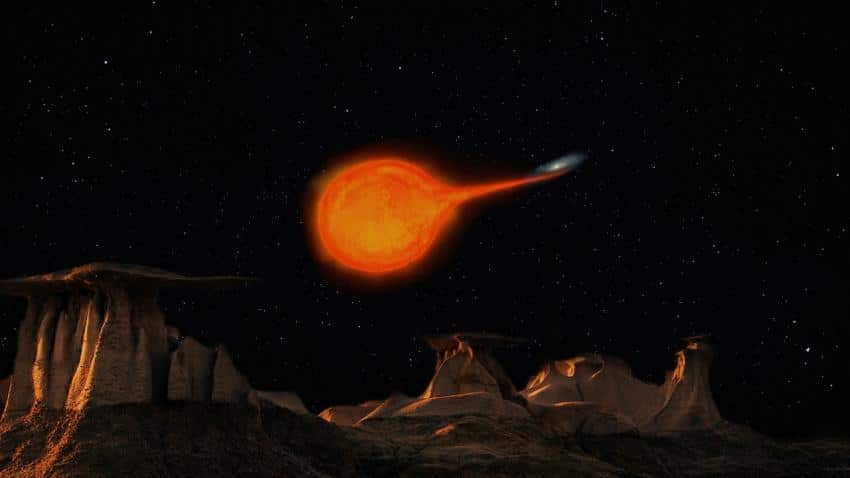An international team of researchers are sharing a new method to detect exoplanets. Astronomers from the Autonomous University of Nuevo León, the National Autonomous University of Mexico and New York University Abu Dhabi say they’re now able to locate exoplanets due to the brightness of orbiting binary stars known as cataclysmic variables, or CVs.
CVs are binary star systems in which the two stars are in very close proximity to each other. These stars are so close that the less massive star transfers mass to the more massive one. Red and white dwarfs form CVs. “Red dwarf stars have a mass between 0.07 and 0.30 solar masses and a radius of around 20% of the Sun’s, while white dwarf stars have a typical mass of around 0.75 Solar masses and a very small radius similar to that of planet Earth,” according to the Royal Astronomical Society.
Within the CV system, when matter transfers from the small star, it forms an accretion disk around the compact, more massive star. The CV system’s brightness mainly comes from this disk and overpowers the light coming from two stars. The mass transfer rate between the two stars is influenced by a third dim body orbiting the CV, creating the entire system’s brightness.
Researchers say “the method described in this new work is based on the change of brightness in the accretion disk due to perturbations of the third body that orbits around the inner two stars.” In astronomy, perturbation is the “deviation in the motion of a celestial object caused either by the gravitational force of a passing object or by a collision with it,” according to Britannica.
The study estimated the mass and distance of a third body orbiting four different CVs using the changes in the brightness of each system. Their results revealed that the brightness variations have very long periods in comparison to the orbital periods in the triple system. Of the four CVs, two appear to have bodies resembling planets in orbit around them.
“Our work has proven that a third body can perturb a cataclysmic variable in such a way that can induce changes in brightness in the system. These perturbations can explain both the very long periods that have been observed — between 42 and 265 days — and the amplitude of those changes in brightness,” explains team leader Dr. Carlos Chavez. “Of the four systems we studied, our observations suggest that two of the four have objects of planetary mass in orbit around them”
Astronomers believe their new technique shows promise for finding planets in orbit around binary star systems.
The study is published in the journal Monthly Notices of the Royal Astronomical Society.












